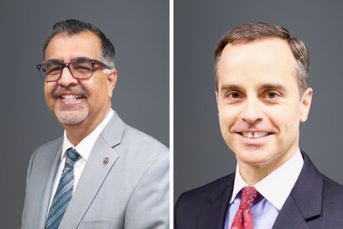Fidelity hits HSA record amid assets, adoption boom

Firm is now the second-largest provider of health savings accounts, with HAS assets quadrupling to $24B since 2020.
As inflation, an impending retirement cliff and other forces create a perfect storm of health care costs for Americans, Fidelity Investments announced it has hit a record in providing health savings accounts for investors nationwide.
Fidelity announced today that its HSAs have reached a milestone with total assets now valued at $24 billion.
That marks a 44 percent annual increase in HSA assets and establishes the firm as the nation’s second-largest HSA provider. This growth coincides with growing levels of investment in HSAs as reflected by a 19 percent rise in funded accounts year-over-year, now totaling 3.3 million.
Steve Betts, head of Fidelity Health, emphasized the importance of such financial tools in the current economic climate.
“Americans and their employers increasingly recognize how important access to comprehensive benefits, including tax-advantaged savings vehicles, can be for managing the financial impact of their health care decisions,” Betts said in a statement.
Introduced in 2005, Fidelity’s health savings account offerings have gained traction as health care costs have continued to rise, doubling since the launch of the product. These accounts offer a triple-tax advantage, with no taxes on contributions, account growth, or withdrawals for qualified medical expenses, making them a valuable tool for both immediate and long-term financial health planning.
Despite the benefits of HSAs in paying for current qualified medical expenses, saving for unforeseen medical emergencies, or preparing for health care costs in retirement, awareness and understanding of these accounts remain a challenge, Fidelity’s research has found only half of Americans are familiar with their potential to alleviate financial concerns related to health care.
“There is always work to be done,” said Karen Volo, head of health and benefit accounts at Fidelity. “Providing as much education as possible can help employees build a more resilient savings strategy, now and in the future.”
Recent studies by Fidelity have also revealed that 17 percent of Americans identify paying medical bills as a significant obstacle to achieving their retirement savings goals. Moreover, 36 percent consider affording health care as one of their top retirement concerns.
However, there is a silver lining, as younger generations are increasingly investing in health savings accounts, with those aged 18-35 more likely to use these accounts for investment purposes compared to older account holders. This proactive approach by younger Americans could play a crucial role in managing future health care expenses, with 71 percent planning to increase their retirement savings due to concerns over health care costs.
Strong fundamentals make munis a screaming buy, says Nuveen strategist
Learn more about reprints and licensing for this article.








